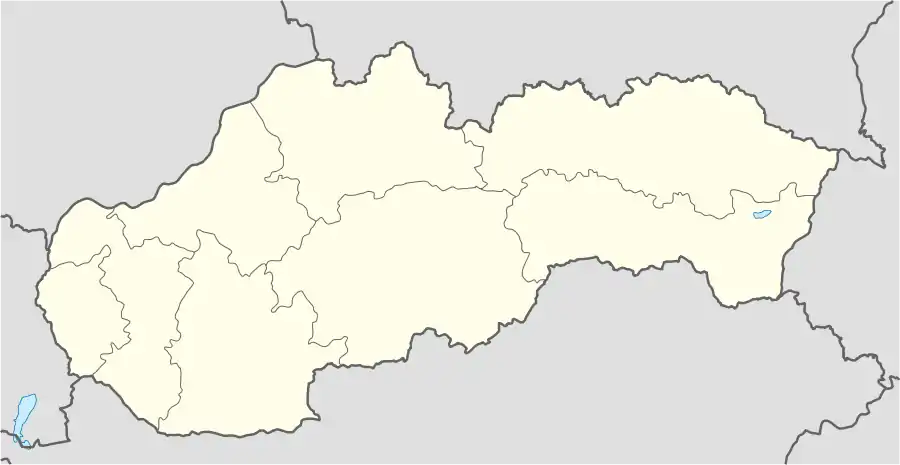List of World Heritage Sites in Slovakia
The United Nations Educational, Scientific and Cultural Organization (UNESCO) World Heritage Sites are places of importance to cultural or natural heritage as described in the UNESCO World Heritage Convention, established in 1972.[1] Slovak Republic ratified the convention on 31 March 1993, making its historical sites eligible for inclusion on the list.[2]
As of 2021, there are seven World Heritage Sites in Slovakia.[2] The first three sites in Slovakia were added to the list in 1993. These sites were Vlkolínec, Historic Town of Banská Štiavnica and the Technical Monuments in its Vicinity, and Spišský Hrad. The latter site was extended in 2009 to include Levoča and the associated cultural monuments. The most recent individual site added to the list was the Wooden Churches of the Slovak part of the Carpathian Mountain Area, in 2008. Five sites in Slovakia are cultural and two are natural. The two natural sites are also transnational, Caves of Aggtelek Karst and Slovak Karst are shared with Hungary and Ancient and Primeval Beech Forests of the Carpathians and Other Regions of Europe are shared with 11 other countries. In addition, Slovakia has 14 sites on the tentative list.[2]
World Heritage Sites
UNESCO lists sites under ten criteria; each entry must meet at least one of the criteria. Criteria i through vi are cultural, whereas vii through x are natural.[3]
| Site | Image | Location | Year listed | UNESCO data | Description |
|---|---|---|---|---|---|
| Historic Town of Banská Štiavnica and the Technical Monuments in its Vicinity | 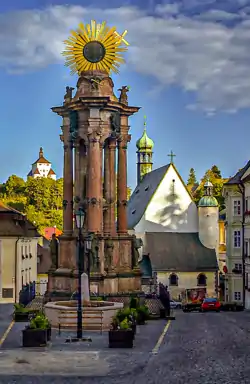 |
Banská Bystrica Region | 1993 | 618rev; iv, v (cultural) | Banská Štiavnica is the oldest mining town in Slovakia. While the mining activities in the area already took place in the Bronze Age, the town itself was founded in the 13th century. The rich deposits of polymetallic ores, including gold and silver, brought wealth to the town, resulting in construction of Renaissance palaces, 16th-century churches, elegant squares, and castles. In 1762, the first Mining and Forestry Academy in Europe was founded here. The mining activities declined in the 19th century due to the depletion of the ore deposits.[4] |
| Levoča, Spišský Hrad and the Associated Cultural Monuments |  |
Prešov and Košice Regions | 1993 | 620bis: iv (cultural) | The Spiš Castle is one of the largest castles in the region and includes well-preserved buildings from the 13th and 14th centuries, in Romanesque and Gothic styles. In 2009, the site was expanded to include the town of Levoča, with its 14th century Basilica of St. James, home to the Late Gothic altar by Master Paul, as well as the associated sites in Spišské Podhradie, Spišská Kapitula, and Žehra, that also feature urban ensembles from the same period.[5][6] |
| Vlkolínec | 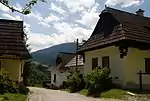 |
Žilina Region | 1993 | 622rev; iv, v (cultural) | Vlkolinec represents a traditional European rural settlement in a mountanious area, and is the best preserved ensemble of that type in the region. The village comprises 43 traditional log houses which mostly date to the 19th century, a church with a bell tower, and a school.[7] |
| Caves of Aggtelek Karst and Slovak Karst* | 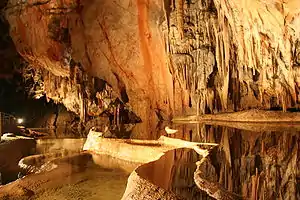 |
Košice Region | 1995 | 725ter; viii (natural) | The site comprises 712 caves in Hungary and Slovakia. They represent a typical temperate-zone karstic system. The sediments and fossils in the caves show geological records of Late Cretaceous and early Tertiary subtropical and tropical climatic conditions, as well as the Pleistocene glaciations. In 2000, the Dobšiná Ice Cave on the Slovakian side was added as an extension to the site. A modification of the site boundaries on the Hungarian side took place in 2008.[8][9] |
| Bardejov Town Conservation Reserve | 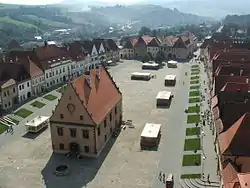 |
Prešov Region | 2000 | 973; iii, iv (cultural) | The town of Bardejov is located close to an important trade route to Poland across the Carpathians. The city plan dates to the 13th and 14th century and included fortifications that were advanced for contemporary standards. Burgher's houses from the 15th century and the Gothic Basilica of St Giles surround the main square. Bardejov also includes a small Jewish quarter from the 18th century.[10] |
| Ancient and Primeval Beech Forests of the Carpathians and Other Regions of Europe* | 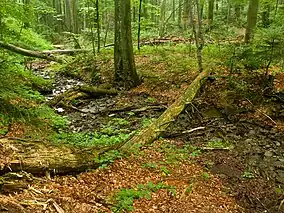 |
Prešov Region | 2007 | 1133ter; ix (natural) | This site comprises undisturbed examples of temperate forests that demonstrates the postglacial expansion process of European beech from a few isolated refuge areas in the Alps, Carpathians, Dinarides, Mediterranean and Pyrenees. The site was originally listed in 2007 as the Primeval Beech Forests of the Carpathians, shared by Slovakia and Ukraine, extended in 2011 to include the Ancient Beech Forests of Germany and further extended in 2017 to include forests in total of 12 countries. Four reserves in Slovakia are listed, Stužica – Bukovské vrchy, Rožok, Vihorlat, and Havešová.[11] |
| Wooden Churches of the Slovak part of the Carpathian Mountain Area | 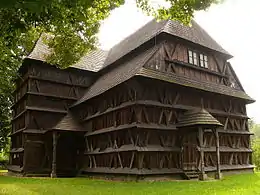 |
Košice, Banská Bystrica, Žilina and Prešov Regions | 2008 | 1273; iii, iv (cultural) | This site comprises eight wooden churces that were built in the Carpathian area of Slovakia between the 16th to the 18th centuries, as representative examples of wooden religious architecture at the junction of three different faiths. Two churches are Roman Catholic, three are Protestant, and three are Greek Orthodox. The Wooden articular church of Hronsek is pictured.[12] |
Tentative list
In addition to sites inscribed on the World Heritage list, member states can maintain a list of tentative sites that they may consider for nomination. Nominations for the World Heritage list are only accepted if the site was previously listed on the tentative list.[13] As of 2021, Slovakia recorded 14 sites on its tentative list.[2]
| Site | Image | Location | Year listed | UNESCO criteria | Description |
|---|---|---|---|---|---|
| Gemer and Abov churches with the medieval wall paintings | Banská Bystrica and Košice Region | 1995 | iv (cultural) | This nomination comprises ten feudal churches in southern Slovakia. They feature well-preserved murals from the 14th and 15th centuries, painted by vagrant Italian painters of the Giotto school.[14] | |
| Tokaj Wine Region* | 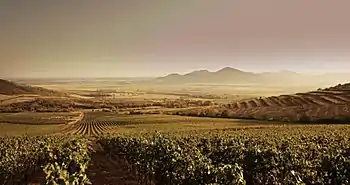 |
Košice Region | 2002 | ii, iii, v (cultural) | Tokaj Wine Region is a cultural landscape where wine has been produced for centuries. It borders the region of the same name in Hungary, that has been listed as a World Heritage Site since 2002, as Tokaj Wine Region Historic Cultural Landscape.[15][16] |
| Original Meadow - Pasture Sites of Slovakia | 62 locations | 2002 | v (cultural) | This nomination comprises 62 sites across Slovakia that preserve traditional forms of farming, a high landscape diversity, well preserved traditional wooden and other original dwellings, and demonstrate significant social and ecological value of the territory.[17] | |
| The Memorial of Chatam Sófer |  |
Bratislava | 2002 | iv, v, vi (cultural) | The Memorial of Chatam Sófer is the burial place of Moses Sofer, a prominent orthodox rabbi from the 19th century, built at the place of a 17th-century Jewish cemetery. The historical cemetery was mostly destroyed with the construction of the road tunnel under Bratislava Castle in 1943 but the graves of important rabbis were preserved.[18] |
| Limes Romanus - The Roman antique monuments on the Middle Danube* | several sites | 2002 | ii, iii, iv, v (cultural) | This is a proposed extension to the site already listed in Germany and the United Kingdom. The Danubian Limes, a network of fortifications along the Danube river, protected the outer borders of the Roman Empire.[19] | |
| System of Fortifications at the Confluence of the Rivers Danube and Váh in Komárno - Komárom* | 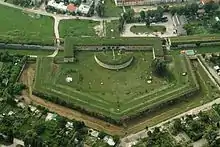 |
Nitra Region | 2002 | i, ii, iv, v (cultural) | The cities of Komárno in Slovakia and Komárom in Hungary are located at the confluence of Danube and Váh rivers. Due to the strategic location, a fortification system has been developed around the area through centuries. The Slovakian part of the site comprises the central fortress, the Palatine line fortifications and the Váh line fortifications.[20][21] |
| The concept of the lenticular historical town core of Košice City | _-_Main_Street_4.jpg.webp) |
Košice Region | 2002 | ii, iv, v (cultural) | The town of Košice was situated on an important trade route intersection, connecting the East Europe with the West Europe and the Baltic with the Black Sea. The market settlement was founded in the 13th century and grew in prominence in the 14th century. The medieval street plan is preserved, with the middle road getting gradually widened into the shape of a lens and in its largest span.[22] |
| Natural Reserves of Tatras Mountain* | 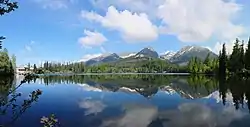 |
Žilina and Prešov Regions. | 2002 | vii, viii, ix, x (natural) | The Tatras are the highest mountain range in the Carpathian Mountains and span the border between Slovakia and Poland. Though currently ice-free, they were covered by glaciers in the Pleistocene epoch. Several glacial landforms are visible, including moraines and glacial lakes. In Slovakia, the area is protected as the Tatra National Park.[23] |
- Karst Valleys of Slovakia (2002)
- Natural and Cultural Landscape of Danube Region (2002)
- Fungal Flora of Bukovské Hills (2002)
- Geyser in Herlany (2002)
- Sites of Great Moravia: Slavonic Fortified Settlement at Mikulčice – Church of St. Margaret of Antioch in Kopčany (2007)
- Ancient and Primeval Beech Forests of the Carpathians and Other Regions of Europe - extension (2019)
References
- "The World Heritage Convention". UNESCO World Heritage Centre. Retrieved 7 July 2019.
- "Slovakia". UNESCO World Heritage Centre. Retrieved 1 February 2021.
- "UNESCO World Heritage Centre – The Criteria for Selection". UNESCO World Heritage Centre. Archived from the original on 12 June 2016. Retrieved 17 August 2018.
- "Historic Town of Banská Štiavnica and the Technical Monuments in its Vicinity". UNESCO World Heritage Centre. Retrieved 1 February 2021.
- "Levoča, Spišský Hrad and the Associated Cultural Monuments". UNESCO World Heritage Centre. Retrieved 1 February 2021.
- "Cities of Caral-Supe (Peru) and Levoča (Slovakia) added to UNESCO's World Heritage List". UNESCO World Heritage Centre. Retrieved 1 February 2021.
- "Vlkolínec". UNESCO World Heritage Centre. Retrieved 1 February 2021.
- "Caves of Aggtelek Karst and Slovak Karst". UNESCO World Heritage Centre. Archived from the original on 6 October 2011. Retrieved 20 October 2011.
- "Decision – 32COM 8B.48 – Examination of nominations and minor modifications to the boundaries of naturel, mixed and cultural properties to the World Heritage List – Caves of Aggtelek Karst and Slovak Karst (HUNGARY / SLOVAKIA)". UNESCO World Heritage Centre. Archived from the original on 20 October 2011. Retrieved 20 October 2011.
- "Bardejov". UNESCO World Heritage Centre. Retrieved 1 February 2021.
- "Primeval Beech Forests of the Carpathians and the Ancient Beech Forests of Germany". UNESCO World Heritage Centre. Retrieved 1 February 2021.
- "Wooden Churches of the Slovak part of the Carpathian Mountain Area". UNESCO World Heritage Centre. Retrieved 1 February 2021.
- "Tentative Lists". UNESCO. Archived from the original on 1 April 2016. Retrieved 12 July 2014.
- "Gemer and Abov churches with the medieval wall paintings". UNESCO World Heritage Centre. Retrieved 4 February 2021.
- "Tokaj Wine Region". UNESCO World Heritage Centre. Retrieved 4 February 2021.
- "Tokaj Wine Region Historic Cultural Landscape". UNESCO World Heritage Centre. Archived from the original on 17 October 2011. Retrieved 20 October 2011.
- "Original Meadow - Pasture Sites of Slovakia". UNESCO World Heritage Centre. Retrieved 4 February 2021.
- "The Memorial of Chatam Sófer". UNESCO World Heritage Centre. Retrieved 4 February 2021.
- "Limes Romanus - The Roman antique monuments on the Middle Danube". UNESCO World Heritage Centre. Retrieved 4 February 2021.
- "System of Fortifications at the Confluence of the Rivers Danube and Váh in Komárno - Komárom". UNESCO World Heritage Centre. Archived from the original on 23 June 2020. Retrieved 18 January 2021.
- "System of Fortifications at the Confluence of the Rivers Danube and Váh in Komárno - Komárom". UNESCO World Heritage Centre. Archived from the original on 12 August 2020. Retrieved 18 January 2021.
- "The concept of the lenticular historical town core of Košice City". UNESCO World Heritage Centre. Retrieved 4 February 2021.
- "Natural Reserves of Tatras Mountain". UNESCO World Heritage Centre. Retrieved 4 February 2021.
